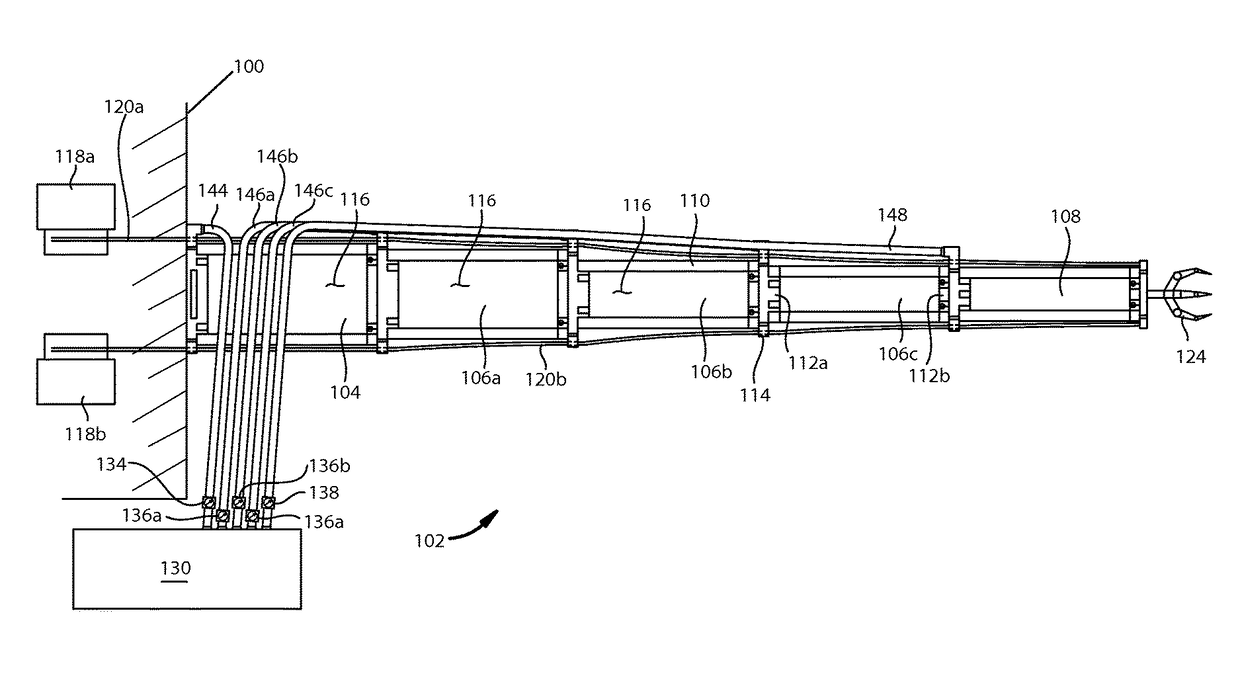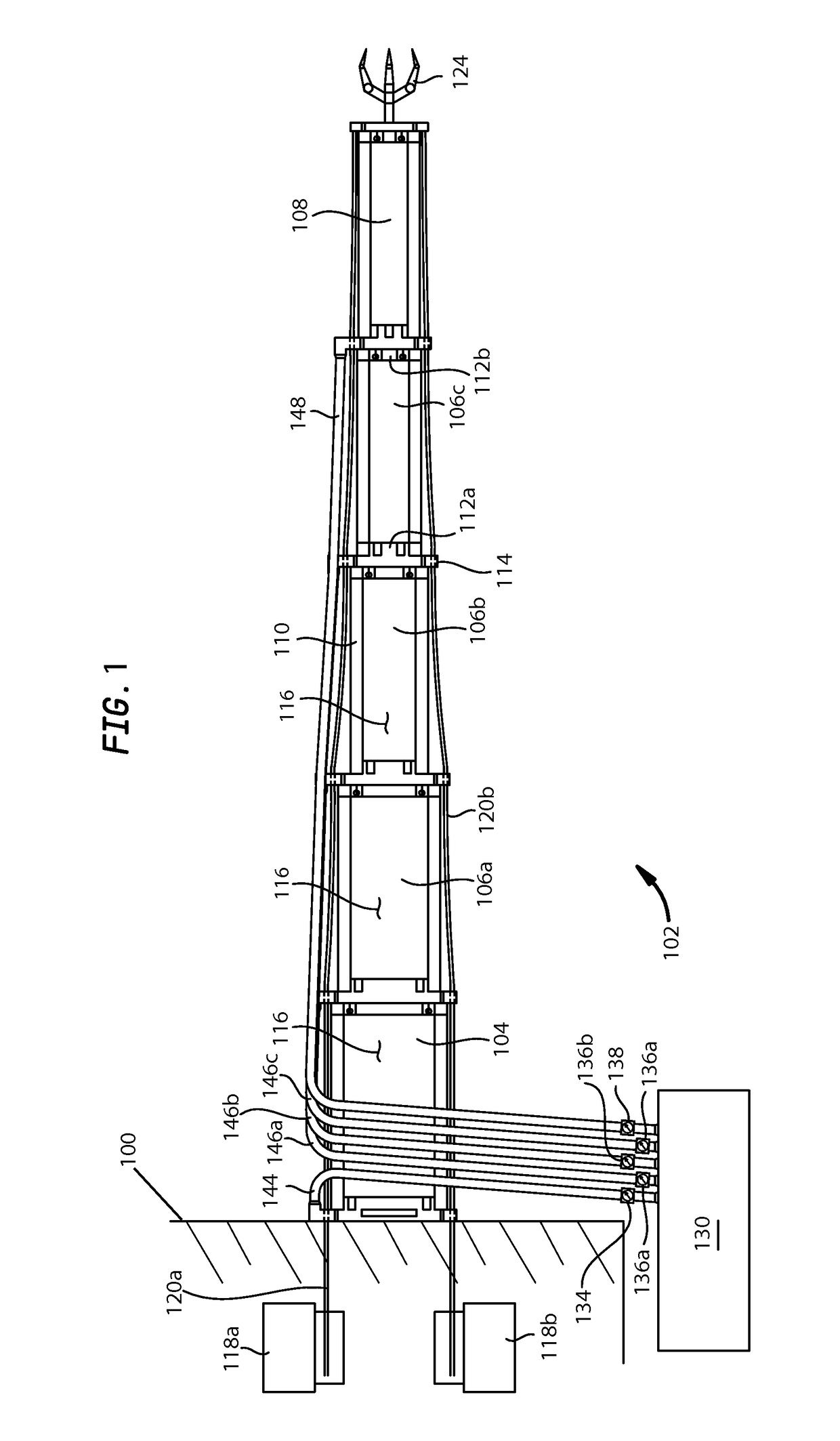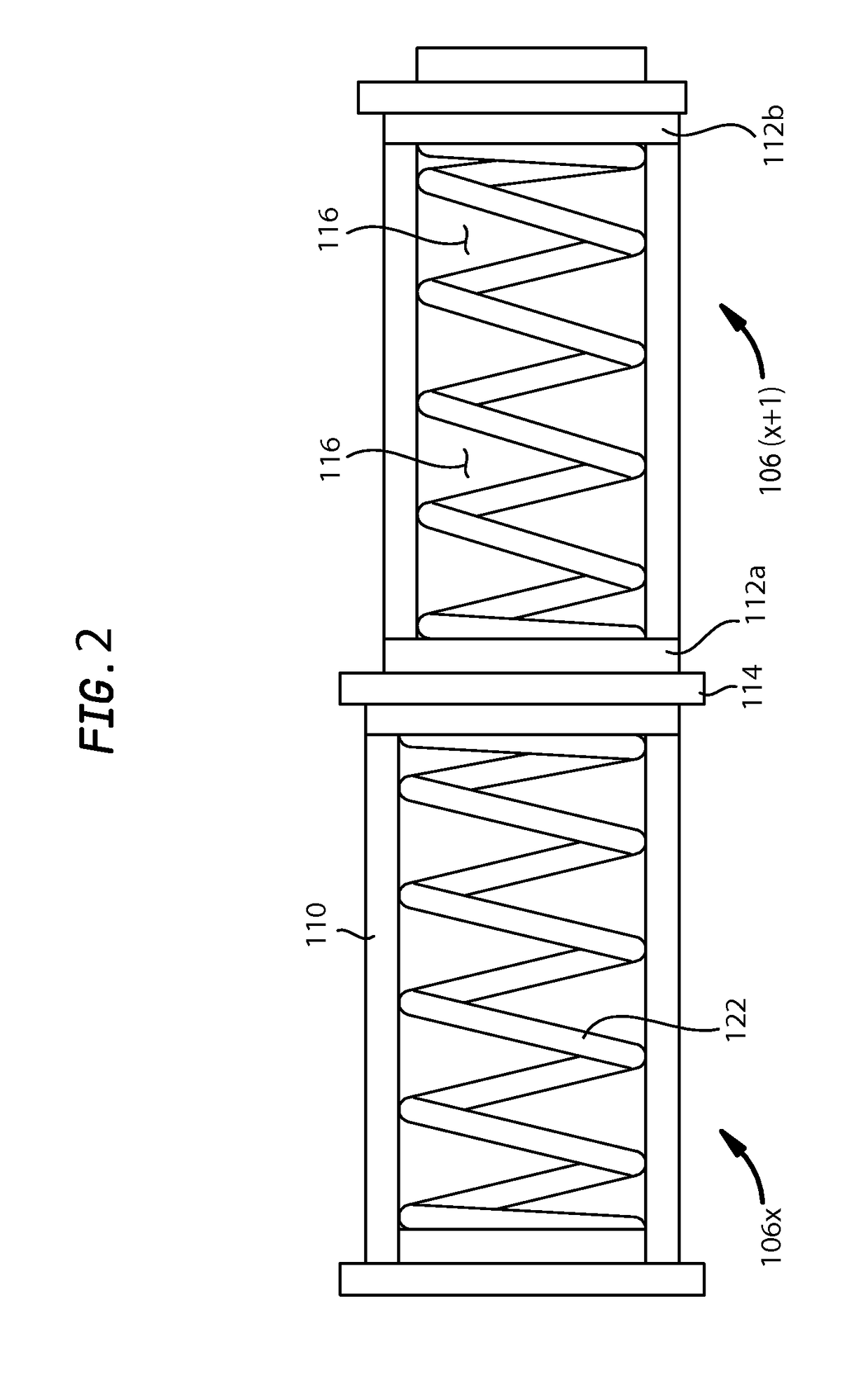Continuum style manipulator actuated with phase change media
a technology of phase change and manipulator, which is applied in the direction of arms, manufacturing tools, applications, etc., can solve the problems of complex, fragile, expensive, and expensive of conventional robotic manipulators, and can not be both passively conforming to their environments and maintaining complex, arbitrary configurations., and achieves high-articulation effects
- Summary
- Abstract
- Description
- Claims
- Application Information
AI Technical Summary
Benefits of technology
Problems solved by technology
Method used
Image
Examples
Embodiment Construction
[0034]FIG. 1 illustrates schematically in cross-section, a representative implementation of a jammable manipulator 102. The manipulator is coupled to ground 100 (shown as a wall) through a base module 104. Intermediate modules 106a, 106b and 106c couple the base module 104 to a terminal module 108. As shown more clearly in FIG. 2, each module is composed, in part, of an envelope 110, which is coupled to a basal end cap 112a and a terminal end cap 112b, arranged toward the base module 104 and the terminal module 108, respectively. Each envelope is fluidically isolatable from the ambient environment, so that a relatively lower pressure, such as a vacuum, or close to a vacuum, when air is the fluid, as compared to atmospheric pressure, can be maintained within each module. The fluid can be air, water, or any other suitable working fluid. Typically, it is air, and the examples shown herein use air as the working fluid.
[0035]It is also possible, as explained below, to establish a pressur...
PUM
 Login to View More
Login to View More Abstract
Description
Claims
Application Information
 Login to View More
Login to View More - R&D
- Intellectual Property
- Life Sciences
- Materials
- Tech Scout
- Unparalleled Data Quality
- Higher Quality Content
- 60% Fewer Hallucinations
Browse by: Latest US Patents, China's latest patents, Technical Efficacy Thesaurus, Application Domain, Technology Topic, Popular Technical Reports.
© 2025 PatSnap. All rights reserved.Legal|Privacy policy|Modern Slavery Act Transparency Statement|Sitemap|About US| Contact US: help@patsnap.com



